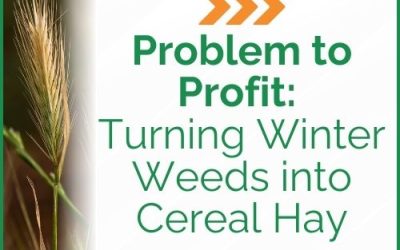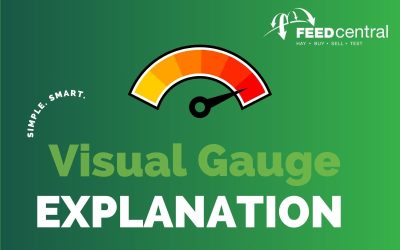Many people ask us if hay is better than silage and vice versa. The answer will depend a lot of the end user and what type of cattle you are feeding.
From Feed Central’s experience the key strengths and weaknesses of Hay and Silage production are summarised below:
Is Hay Better Than Silage?
HAY PROS
- Efficient to transport with lower costs on a dry matter basis compared to Silage and Straw .
- Lower delivery costs when taking into consideration protein, metabolisable energy, neutral detergent fibre etc.
- More contractors are equipped to make Hay
- Lower baling costs per tonne
- More market outlets.
HAY CONS
- Can be exposed to weather damage whilst curing.
- Feed test results are generally lower, when compared to silage.
- Degrades faster if stored unprotected outside (must be shed stored).
Is Silage Better Than Hay?
WRAPPED SILAGE PROS
- Greater quality feed test results compared to Hay.
- Less exposed to weather damage.
- Unaffected by the type of storage and storage surface.
- Good silage is free of weed seeds.
- A good fodder conservation option when consumed on the same farm it is produced.
WRAPPED SILAGE CONS
- Transport costs are higher on a dry matter basis compared to Hay, i.e.. with silage you are carting a lot of unnecessary water.
- Higher delivery cost based on protein, metabolisable energy, neutral detergent fibre on a dry matter basis.
- Baling cost per tonne is higher.
- Less market outlets & demand.
- The plastic wrap of silage tends to get damaged during handling.
As a general rule, when pricing Silage against Hay, simply divide the price of Hay by 2.5, because a ‘normal’ bale of Silage is approximately between 50-75% percent water.
For example:
If the Hay costs $225 per tonne, then the Silage price would need to be $90 per tonne to be roughly equivalent. We recommend that buyers calculate the cost of silage on a Dry Matter delivered basis, which almost always is dearer than Hay.
In summary, many people, including Dairy farmers, strongly advocate silage production and consumption. From a marketing perspective, Feed Central advises that you make silage with EXTREME care. If you are going to use the product (and not sell it) silage could be a better feed choice.



